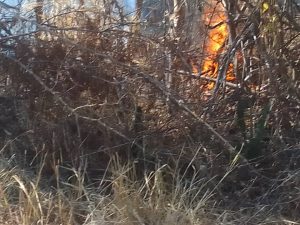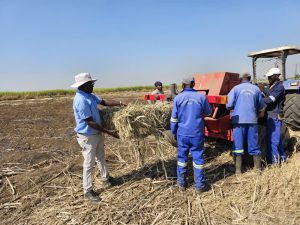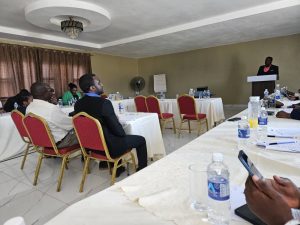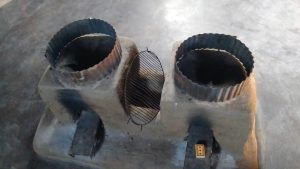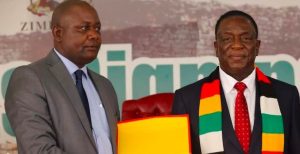…as mining company commits to compensation, pollution fight
Elliot Kansile
CHIRUMHANZU – Disagreements between chieftaincies that claim ownership of the land on which the Dinson Iron and Steel is mining iron and setting up a steel plant seem to have found new unity after conducting an indaba in Mvuma.
With support from government, the meeting was convened by Chief Chirumhanzu, Fidelis Mudzengi who had been feuding with Chiefs Musarurwa, real name Enos Musakwa, of the neighbouring Chikomba district.
Chief Musarurwa himself had been feuding with fellow Chikomba traditional leader Chief Mushava over ownership of the Manhize escarpment.
Mining projects are a source of great wealth for traditional leaders as mining companies are required to pay millions of US dollars to community share ownership schemes which are largely controlled by chiefs.
Dinson Iron and Steel, which is owned by listed Chinese steel conglomerate Tsingshan Holdings, is situated around the mountainous Mhanhize escarpment which forms the border between Mashonaland West province, protruding into Chirumhanzu district, which is in the Midlands province, but with the backbone in Chikomba district, which is in Mashonaland East province.
During a recent policy dialogue on extractive accountability and climate change organised by EnviroPress with support from the Southern Africa Trust (SAT), some participants lamented the disputes between the traditional leadership as bad for investment and called upon the protagonists to find one another.
The no-holds-barred meeting saw Chief Chirumhanzu charming his peers with sweet talk, detailing the pre-colonial harmony that had always existed between peoples of the two district.
He said instead of squabbling, traditional leaders ought to work together and help ensure that the iron and steel project fully benefits people of all districts.
Among other officials, the meeting was also attended by Dinson representatives, Chirumhanzu-Zibagwe MP Prosper Machando and Chirumhanzu District Development Coordinator (DDC) Charlton Murove.
“We have our shared natural resources which must improve livelihoods for all the people we represent as traditional leaders. The disagreements we have had should no longer subsist because it is bad for the work which is being done. I am pleased that our esteemed chiefs from Chikomba are here and they have told us they support the work of the company,” said Chief Chirumhanzu.
He was supported by Acting Chief Hama Joseph Zishiri, who is also from Chirumhanzu district, who urged Dinson to work closely with the local authority Chirumhanzu RDC and adopt smart physical planning practices.
“We want to see new standard public infrastructure being built and we want good houses for employees. We are happy that there is a commitment from all parties to support the country’s development and modernisation aspirations,” he said.
Chiefs from Chikomba district who participated in the meeting are Maromo, Musarurwa, Kareya, Mutekedza and Chivase.
On his part Chirumhanzu Rural District Council (RDC) CEO Lovemore Chatikobo said up to 6 500 hectares of land had been made available to accommodate houses, shopping malls, health facilities and processing or melting processes of any magnitude.
Dinson Iron and Steel corporate communications manager Joseph Shoko said the company was committed to fair compensation to those that will be moved as well as those that have already been moved to pave way for the project.
“We are working closely with the DDC to make sure that nobody is removed from their land unfairly. We are in the process of building houses for some of the affected families and family members will be considered for job opportunities depending on availability,” said Shoko.
He also said the company is working with the country’s environmental authorities to make sure the environment suffers the least level of damage as possible.
“We pledge to help protect Munyati zRiver and Mashenjere Dam, both of which are critical for our operations. The environment means a lot to us because we depend on it to do business,” he said.
Later on, Dinson facilitated a site visit to Manhize where the traditional leaders had a chance to appreciate the scope of development, perform some traditional rites and have some of their questions answered.
Once completed, the plant is expected to produce an estimated 2 million tons of steel per year, becoming one of the largest producers of the product in Africa.
This project was made possible through a partnership with the Southern Africa Trust. The views expressed herein do not necessarily represent that of the Trust or its associates. www.southernafricatrust.org

